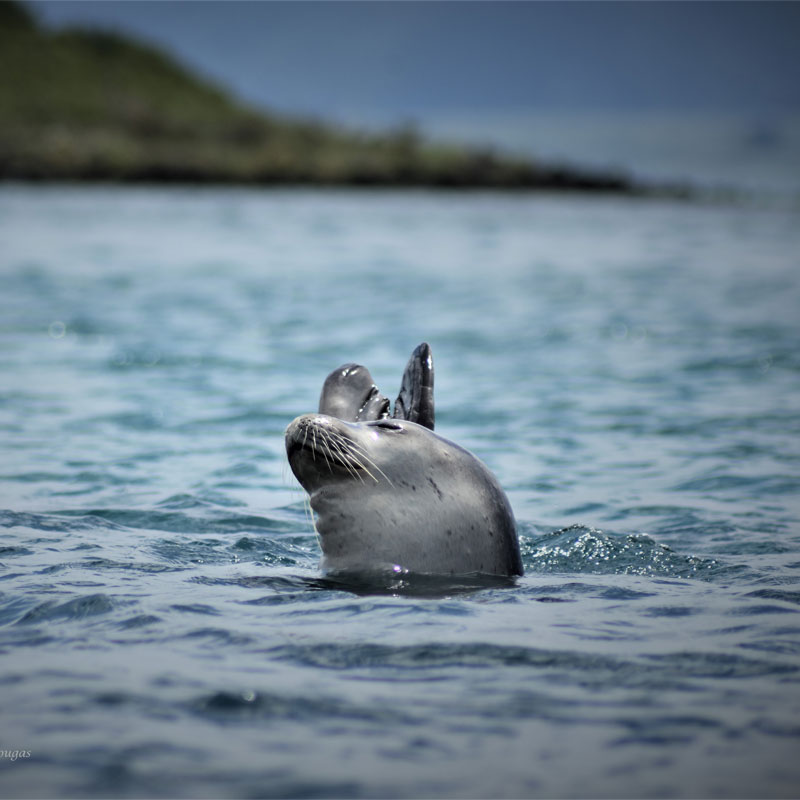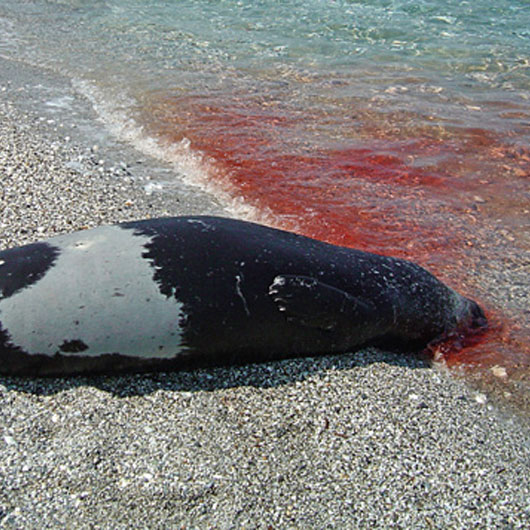BIOLOGY
The Mediterranean monk seal, Monachus monachus, is the rarest of the 33 extant seal species on Earth. It is also the most endangered marine mammal in Europe and one of the most critically endangered animals known. Of the 700 individuals estimated to survive in and around the Mediterranean, almost half of the population lives in Greek territorial waters.
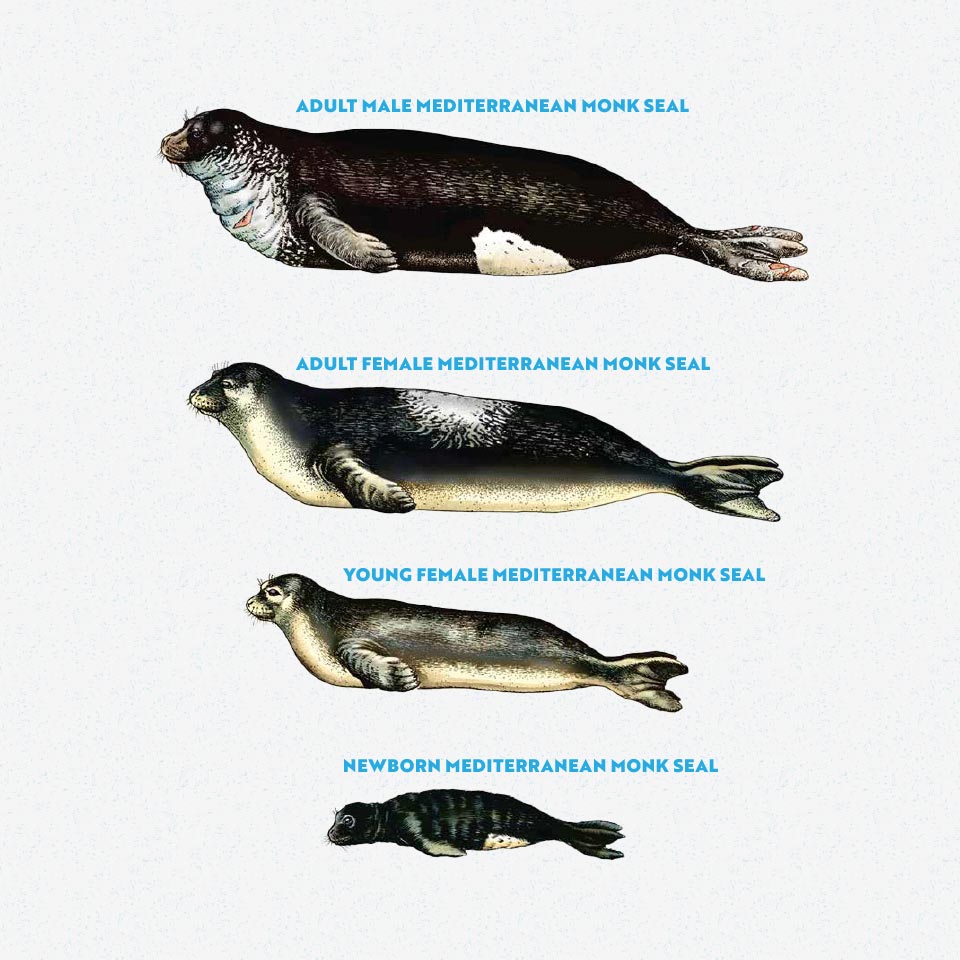
MORPHOLOGY
The Mediterranean monk seal is one of the largest “true” seal species on Earth. Adult seals can reach a length of 2.8 m and weigh as much as 300 kg. Their body is torpedo-like, which, in combination with their flippers, makes moving in the aquatic environment much easier. Mediterranean monk seals do not have external ears, but small acoustic holes and long, smooth vibrissae (whiskers), which function as sensory organs. Juvenile and adult Mediterranean monk seals have a close-cropped pelt, which is usually black, brown or silver-gray on the back and lighter at the belly. Scars, which are a characteristic feature of adult animals and result from interactions with other animals, are used by scientists to help identify individual animals.
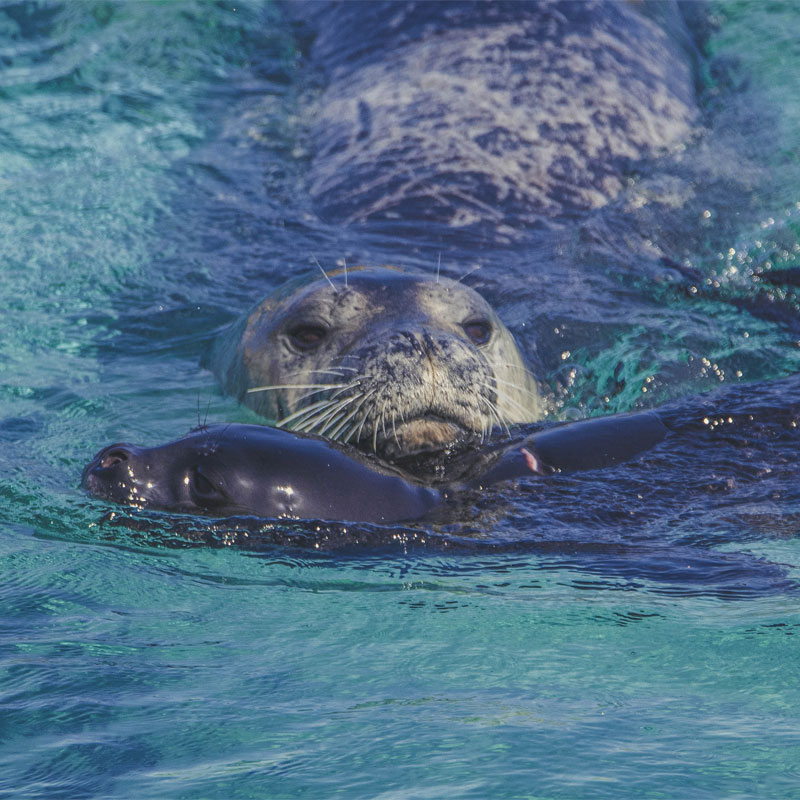
The Mediterranean monk seal is characterized by slight sexual dimorphism (i.e., differences in the appearances between females and males). Adult male Mediterranean monk seals are slightly larger and heavier than adult females. Differences also exist in the color of the pelage: adult males are black on the back and have a distinct white patch on the belly, whereas females are brownish/silver-gray on the back and a little bit lighter colored on the belly. Newborn pups are approximately 1m long when born and weigh 15 – 18 kg. Pups possess a soft and wooly pelt or “lanugo”, which is approximately 1 – 1.5 cm long. Monk seal pups have a black coat with a distinctive white or yellowish patch on the belly, which is unique to the species. The general shape of this patch is different between male and females and can be used by scientists to help identify individuals. This patch disappears after the first molt, but returns for the males when they reach sexual maturity. Monk seals can live up to 30 years in the wild.

REPRODUCTION
Sexual maturity is attained at 3 – 4 years of age for females and 5 – 6 years for males. Monk seals mate in the water and gestation lasts approximately 9 to 11 months, after which a single pup is born on land. The pupping season in Greece takes place from August to December with a peak in births during the second week of October. Lactation and nursing can last up to 5 months and is the longest known for “true” seals. During lactation, mothers do not fast and often leave their pups unattended in the maternal cave in search of food (unlike Hawaiian monk seal mothers who are constantly with their pups, nurse for an intensive 6-week period, and then wean). Mediterranean monk seals are slightly polygynous, i.e. an adult male will mate with more than one female and has a small “harem”.

MARINE & TERRESTRIAL HABITAT
Mediterranean monk seals spend most of their lives at sea looking for food. Recent scientific research has shown that a large part of their diet consist of octopi. Monk seals can travel significant distances at sea in a short time period (i.e., 150 nautical miles in 3 months) and dive to depths down to 200 m starting at a very young age. Before and while diving, seals hold their breath and are able to reduce their heart beat significantly and restrict blood circulation to the essential organs. In the water monk seals are able to see well; however, they can also find their prey with the help of their vibrissae, which are very sensitive organs capable of detecting even the slightest movements in the water. Their hearing is well developed and seals are generally capable of hearing higher sound frequencies than humans. The sense of smell plays an important role in the life of a Mediterranean monk seal as scent and sniffing is used intensively in the first weeks of a newborn pup’s life in order to communicate and find its mother in the dark caves where they live..
The body temperature of a Mediterranean monk seal is approximately 38οC. Under the skin is a thick layer of blubber (fat) that acts as an insulator, keeping the body temperature constant, both in water and on land.
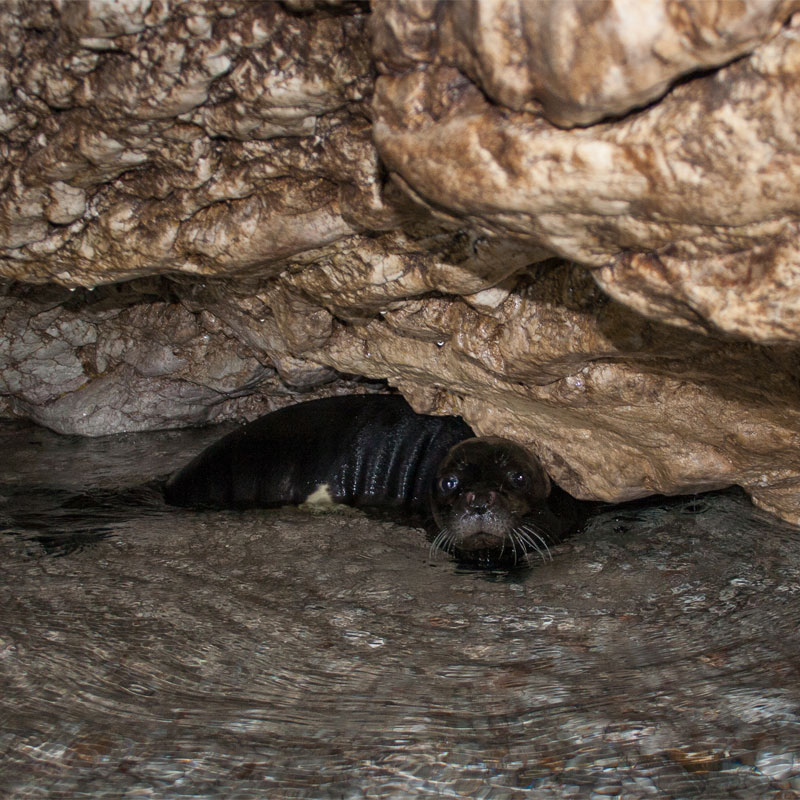
As with all other seals, monk seals also haul out on land in order to rest, but most importantly to give birth to, and care for, their young. The preferred terrestrial habitat used by monk seals are well-protected marine caves found along remote and inaccessible stretches of coastline. Suitable caves have one or more above-surface or underwater entrances that lead to a main resting area with a beach or a flat, rocky surface. According to the information currently available, monk seals in Greece use the caves mainly at night, and cave usage increases significantly during the pupping season and in the winter. During the first months of their lives, young monk seal pups spend a lot of time on the beach or in the water inside the cave. Monk seal survival seems to be very dependent on the existence of suitable pupping caves.

